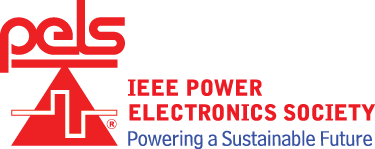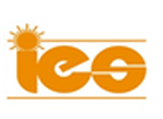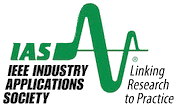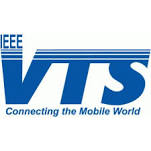IFEC 2022 Awards Announced
Congratulations to the following winners:
The Grand Prize ($10k)
Utah State University
Utah State University
|
The Best Innovation Award ($5k)
University of Belgrade The Best Engineering Design Award ($3k) Reutlingen University The Best presentation Award ($1k) Leibniz University, Hannover |
The Best Team Work Award($500)
University of Maryland The Best Educational Impact Award($500) University of Connecticut The Best Particpant Award($300) University of Moratuwa |
2022 International Future Energy Challenge
College Student Competition
Final competition Time: July 27-29, 2022
Final competition Time: July 27-29, 2022
Final Round Competition Teams for IFEC 2022
University of Belgrade (H-bridges)
Leibniz University, Hannover
Reutlingen University
University of Moratuwa
University of Maryland
University of Connecticut
Utah State University
University of Manitoba
Call for Proposals
Detailed Request for Proposals
For any question and suggestion, please contact by email: kevinbai@utk.edu
Detailed Request for Proposals
For any question and suggestion, please contact by email: kevinbai@utk.edu
|
General Chair:
Kevin Bai, University of Tennessee Publicity Chairs: Helen Cui, University of Tennessee |
General Co-chair:
Daniel Costinett, University of Tennessee Finance Chair: Ching-Jan Chen, National Taiwan University |
IFEC 2022 -Smart, Efficient and Light Solar Microgrid Inverter
IFEC Introduction
Participation is on a proposal basis. Those schools that are interested must submit a proposal to the topic chairs above before the proposal deadline. Each Proposal will be judged by a distinguished panel of volunteer experts from the IEEE and from industry. Schools with successful proposals will be notified and qualified for the rest of the competition. Deadline for each period will be posted on the IFEC website. The outstanding teams will be invited to a competition event in summer of 2022.
In each of the two topic areas there will be a Grand Prize of $10,000 and three additional awards granted at $1,000, $3000 and $5,000 each.
Background of IFEC 2022 Topic
The past decade has witnessed a surge in the use of solar inverter in power grid and microgrid applications. In the past 40 years, solar energy has grown from a niche technology powering satellites in space to a technology that powers homes and businesses in every state. According to the U.S. Energy Information Administration (EIA), solar supplied nearly 2.5% of U.S. electricity demand in the first 11 months of 2018. In some states, solar represented up to 15% of total annual electricity generation. There are nearly 2 million solar installations in increasingly diverse climates, policy environments, and commercial markets across the country. Some of America’s biggest companies, including Walmart, Apple, Target, and Amazon, lead corporate adoption of solar and help mobilize demand for solar in new regions.
Integrating renewable and distributed energy resources, such as photovoltaics (PV) and energy storage devices, into the electric distribution system requires advanced power electronics, or smart inverters, that provide grid services such as voltage and frequency regulation, ride-through, dynamic current injection, and anti-islanding functionality. The U.S Department of Energy has been sponsoring all major research institutes and grid companies to push the solar inverter and related technology to reach marketability for years. Since 2010, solar costs have declined 70% to 80%, making solar one of the most economical ways to add new electricity generation to the grid. It is estimated that solar will grow to account for 5% of U.S. electricity by 2030.
The main goal of this topic is to develop high efficiency high power density smart solar inverter for microgrid applications. Currently, grid-tied solar inverter topology has been widely used in residential roof, ranging 3~10kW [1]. However, the solar inverters still have great potential to provide the grid services, such as providing frequency regulation by managing active power generation, exchanging reactive power between the solar inverter and the electric grid in order to improve the reliability and resilience of the grid, reduce the cost of energy, and ease the planning and maintenance of the grid.
Another cost reduction driver is the installation cost. U.S. residential and commercial PV systems are 89% and 91% toward achieving 2020 electricity price targets. With further efficiency increment, the system loss related heatsink weight and size can be further reduced, which yields in lower installation cost. This high efficiency and high power density can be achieved through innovations in new circuit topologies, optimizations of circuit parameters, optimization of the passive components, and possible implementations of highly efficient wide-bandgap (WBG) devices. WBG devices, such as Silicon Carbide (SiC) Metal Oxide Field Effect Transistors (MOSFET) and Gallium Nitride (GaN) High-Electron-Mobility Transistor (HEMT), are expected to have lower on-resistance, lower switching loss and higher junction temperature than their Silicon (Si) based counterparts. The lower power loss and higher junction temperature can bring in the size and cost reduction in the cooling system, whereas the higher switching frequency can result in smaller passive components. At this time, SiC MOSFETs and GaN HFET from various vendors are already available in the market. For this topic competition, all the teams are encouraged to use active WBG devices in their circuits.
Topic: Smart, Efficient and Light Solar Microgrid Inverter
Preliminary Specifications:
Participation
Participation is on a proposal basis. Those schools that are interested must submit a proposal to the topic chairs above before the proposal deadline. Each Proposal will be judged by a distinguished panel of volunteer experts from the IEEE and from industry. Schools with successful proposals will be notified and qualified for the rest of the competition. Deadline for each period will be posted on the IFEC website. The outstanding teams will be invited to a competition event in summer of 2022.
In each of the two topic areas there will be a Grand Prize of $10,000 and three additional awards granted at $1,000, $3000 and $5,000 each.
Important Notice
Schedule
Proposal Due Oct. 31, 2021
Notification of Acceptance Nov. 30, 2021
Workshop at APEC’2022 Mar. 20, 2022
Notification of Final Teams Mar. 27, 2022
Final Competition Jul, 2022
Please visit http://www.energychallenge.org/ for more detailed information.
Participation is on a proposal basis. Those schools that are interested must submit a proposal to the topic chairs above before the proposal deadline. Each Proposal will be judged by a distinguished panel of volunteer experts from the IEEE and from industry. Schools with successful proposals will be notified and qualified for the rest of the competition. Deadline for each period will be posted on the IFEC website. The outstanding teams will be invited to a competition event in summer of 2022.
In each of the two topic areas there will be a Grand Prize of $10,000 and three additional awards granted at $1,000, $3000 and $5,000 each.
Background of IFEC 2022 Topic
The past decade has witnessed a surge in the use of solar inverter in power grid and microgrid applications. In the past 40 years, solar energy has grown from a niche technology powering satellites in space to a technology that powers homes and businesses in every state. According to the U.S. Energy Information Administration (EIA), solar supplied nearly 2.5% of U.S. electricity demand in the first 11 months of 2018. In some states, solar represented up to 15% of total annual electricity generation. There are nearly 2 million solar installations in increasingly diverse climates, policy environments, and commercial markets across the country. Some of America’s biggest companies, including Walmart, Apple, Target, and Amazon, lead corporate adoption of solar and help mobilize demand for solar in new regions.
Integrating renewable and distributed energy resources, such as photovoltaics (PV) and energy storage devices, into the electric distribution system requires advanced power electronics, or smart inverters, that provide grid services such as voltage and frequency regulation, ride-through, dynamic current injection, and anti-islanding functionality. The U.S Department of Energy has been sponsoring all major research institutes and grid companies to push the solar inverter and related technology to reach marketability for years. Since 2010, solar costs have declined 70% to 80%, making solar one of the most economical ways to add new electricity generation to the grid. It is estimated that solar will grow to account for 5% of U.S. electricity by 2030.
The main goal of this topic is to develop high efficiency high power density smart solar inverter for microgrid applications. Currently, grid-tied solar inverter topology has been widely used in residential roof, ranging 3~10kW [1]. However, the solar inverters still have great potential to provide the grid services, such as providing frequency regulation by managing active power generation, exchanging reactive power between the solar inverter and the electric grid in order to improve the reliability and resilience of the grid, reduce the cost of energy, and ease the planning and maintenance of the grid.
Another cost reduction driver is the installation cost. U.S. residential and commercial PV systems are 89% and 91% toward achieving 2020 electricity price targets. With further efficiency increment, the system loss related heatsink weight and size can be further reduced, which yields in lower installation cost. This high efficiency and high power density can be achieved through innovations in new circuit topologies, optimizations of circuit parameters, optimization of the passive components, and possible implementations of highly efficient wide-bandgap (WBG) devices. WBG devices, such as Silicon Carbide (SiC) Metal Oxide Field Effect Transistors (MOSFET) and Gallium Nitride (GaN) High-Electron-Mobility Transistor (HEMT), are expected to have lower on-resistance, lower switching loss and higher junction temperature than their Silicon (Si) based counterparts. The lower power loss and higher junction temperature can bring in the size and cost reduction in the cooling system, whereas the higher switching frequency can result in smaller passive components. At this time, SiC MOSFETs and GaN HFET from various vendors are already available in the market. For this topic competition, all the teams are encouraged to use active WBG devices in their circuits.
Topic: Smart, Efficient and Light Solar Microgrid Inverter
Preliminary Specifications:
- Grid voltage: single-phase and three-phase universal ac input, 50 Hz~60 Hz;
- Solar input voltage: 30 V~60 V ( 48V for nominal);
- Output power: 1kW at Vin=50 V;
- Reactive power compensation: see detailed CFP online;
- Grid current THD: <2% @ 1kW;
- Input power factor: >0.99 @ 1kW;
- Efficiency: ≥95% @ 1kW & ≥ 94% @ 500W.
- Cooling: natural or forced convection;
- Volume & Weight (power electronics): no specific requirement, but small number takes the advantage;
- Protection: OCP, OVP, SCP, OTP, no damage @SCP;
- Safety: galvanic isolation is needed. no exposed live electrical elements.
Participation
Participation is on a proposal basis. Those schools that are interested must submit a proposal to the topic chairs above before the proposal deadline. Each Proposal will be judged by a distinguished panel of volunteer experts from the IEEE and from industry. Schools with successful proposals will be notified and qualified for the rest of the competition. Deadline for each period will be posted on the IFEC website. The outstanding teams will be invited to a competition event in summer of 2022.
In each of the two topic areas there will be a Grand Prize of $10,000 and three additional awards granted at $1,000, $3000 and $5,000 each.
Important Notice
- Each proposal will be judged separately. Each team proposal must address the specs in the following page of this RFP.
- Each university can support only one team.
- Teams are limited at minimum 4 members, with at least two undergraduate students. Interdisciplinary teams are encouraged. Graduate students are not excluded, but are limited to the advisory role in the team.
Schedule
Proposal Due Oct. 31, 2021
Notification of Acceptance Nov. 30, 2021
Workshop at APEC’2022 Mar. 20, 2022
Notification of Final Teams Mar. 27, 2022
Final Competition Jul, 2022
Please visit http://www.energychallenge.org/ for more detailed information.









